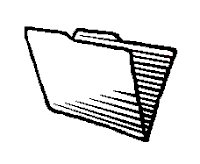 |
|
 |
|
SPECIFIC CONDUCTANCE (SC)
Specific Conductance (SC) is a measure of how well water can conduct an electrical current. Conductivity increases with increasing amount and mobility of ions. These ions, which come from the breakdown of compounds, conduct electricity because they are negatively or positively charged when dissolved in water. Therefore, SC is an indirect measure of the presence of dissolved solids such as chloride, nitrate, sulfate, phosphate, sodium, magnesium, calcium, and iron, and can be used as an indicator of water pollution.
Specific Conductance measures how well water can conduct an electrical current for a unit length and unit cross-section at a certain temperature. More specifically, it is defined as the "reciprocal (opposite) of the resistance in ohms measured between opposite faces of a centimeter cube of an aqueous solution at a specified temperature" (Hem, 1985). That is,conductance = 1 / resistance
Specific conductance is measured using a sensor which measures resistance. Resistance means how well something can resist an electrical current, and is reported in ohms. The unit of conductance was originally ohm spelled backwards – "mho." More recently, however, the name "siemen" has been used to match the term used by the International System of Units. So both "mho" and "siemen" are sometimes seen in water quality reports. One siemen is equal to one mho. Because SC in natural waters is usually much less than 1 siemen/cm, SC is usually reported in microsiemens (1/1,000,000 siemen) per centimeter, or µS/cm. SC is affected by temperature, so for consistency SC values are converted to what they would be at room temperature (25° C).
Geology and soil in the watershed
Some rock and soil release ions very easily when water flows over them; for example, if acidic water flows over rocks containing calcite (CaCO3), such as calcareous shales, calcium (Ca2+) and carbonate (CO32-) ions will dissolve into the water. Therefore, SC will increase. However, some rocks, such as quartz (SiO2), are very resistant, and don't dissolve easily when water flows over them (and even if SiO2 does dissolve, it is not conductive). SC of waters draining areas where the geology only consists of quartz or other resistant rocks will be low (unless other factors are involved).

Acid mine drainage
Drainage from operating and abandoned mine sites can contribute iron, sulfate, copper, cadmium, arsenic, and/or other constituents if minerals containing these constituents are present and are exposed to air and water. This increase in ions will increase the SC.
 Agricultural
runoff
Agricultural
runoff
Runoff from farms can contain fertilizers, which contain phosphate and nitrate. In addition, irrigation return flow can leach salts from the soil.
Road runoff

Runoff from roads can contain leaked automobile fluids and salts from chemicals used in road de-icing, such as sodium chloride (NaCl) and magnesium chloride (MgCl2).

Water Quality Standards and Other Criteria Regarding SC
Generally, there aren’t regulatory levels for SC. Instead, the concentration of total dissolved solids (TDS) is often regulated. However, SC is an easily-obtained parameter that is an good indicator of the amount of dissolved solids in a water, and thus can be used to detect contaminants in water.
Pure water would theoretically have an SC value of zero µS/cm at 25° C; however, this water is very difficult to produce. Distilled or deionized water has an SC of at least 1 µS/cm. Rain water can have an SC value higher than distilled water, because it dissolves gases from the air and also particles of dust or other airborne material. Sea water has an SC of approximately 50,000 µS/cm, because of the large amount of dissolved salts it contains.